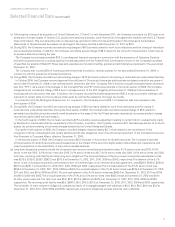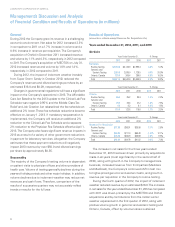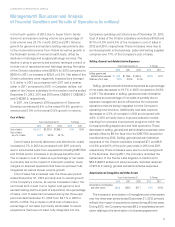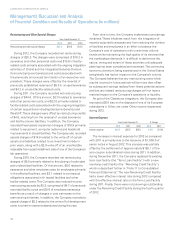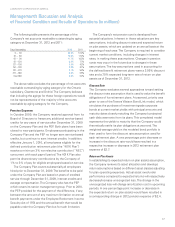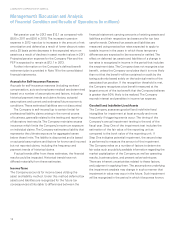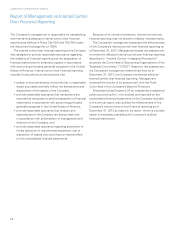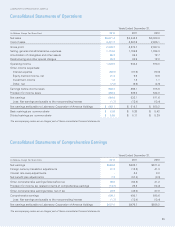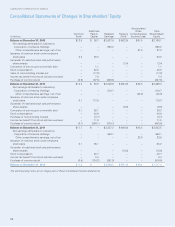LabCorp 2012 Annual Report Download - page 18
Download and view the complete annual report
Please find page 18 of the 2012 LabCorp annual report below. You can navigate through the pages in the report by either clicking on the pages listed below, or by using the keyword search tool below to find specific information within the annual report.16
LABORATORY CORPORATION OF AMERICA
Management’s Discussion and Analysis
of Financial Condition and Results of Operations (in millions)
Critical Accounting Policies
The preparation of financial statements in conformity
with generally accepted accounting principles requires
management to make estimates and assumptions that
affect the reported amounts of assets and liabilities and
disclosure of contingent assets and liabilities at the date
of the financial statements and the reported amounts of
revenues and expenses during the reported periods. While
the Company believes these estimates are reasonable and
consistent, they are by their very nature, estimates of
amounts that will depend on future events. Accordingly, actual
results could differ from these estimates. The Company’s
Audit Committee periodically reviews the Company’s
significant accounting policies. The Company’s critical
accounting policies arise in conjunction with the following:
• Revenue recognition and allowance for doubtful
accounts;
• Pension expense;
• Accruals for self insurance reserves;
• Income taxes; and
• Goodwill and Indefinite-Lived Assets
Revenue Recognition and Allowance
for Doubtful Accounts
Revenue is recognized for services rendered when the
testing process is complete and test results are reported to
the ordering physician. The Company’s sales are generally
billed to three types of payers – clients, patients and third
parties such as managed care companies, Medicare and
Medicaid. For clients, sales are recorded on a fee-for-service
basis at the Company’s client list price, less any negotiated
discount. Patient sales are recorded at the Company’s
patient fee schedule, net of any discounts negotiated with
physicians on behalf of their patients. The Company bills
third-party payers in two ways – fee-for-service and capitated
agreements. Fee-for-service third-party payers are billed at
the Company’s patient fee schedule amount, and third-party
revenue is recorded net of contractual discounts. These
discounts are recorded at the transaction level at the time
of sale based on a fee schedule that is maintained for each
third-party payer. The majority of the Company’s third-party
sales are recorded using an actual or contracted fee schedule
at the time of sale. For the remaining third-party sales,
estimated fee schedules are maintained for each payer.
Adjustments to the estimated payment amounts are
recorded at the time of final collection and settlement of
each transaction as an adjustment to revenue. These
adjustments are not material to the Company’s results of
operations in any period presented. The Company periodically
adjusts these estimated fee schedules based upon historical
payment trends. Under capitated agreements with managed
care companies, the Company recognizes revenue based
on a negotiated monthly contractual rate for each member
of the managed care plan regardless of the number or cost
of services performed.
The Company has a formal process to estimate and
review the collectibility of its receivables based on the period
of time they have been outstanding. Bad debt expense is
recorded within selling, general and administrative expenses
as a percentage of sales considered necessary to maintain
the allowance for doubtful accounts at an appropriate level.
The Company’s process for determining the appropriate level
of the allowance for doubtful accounts involves judgment,
and considers such factors as the age of the underlying
receivables, historical and projected collection experience,
and other external factors that could affect the collectibility
of its receivables. Accounts are written off against the allow-
ance for doubtful accounts based on the Company’s write-off
policy (e.g., when they are deemed to be uncollectible). In the
determination of the appropriate level of the allowance,
accounts are progressively reserved based on the historical
timing of cash collections relative to their respective aging
categories within the Company’s receivables. These collection
and reserve processes, along with the close monitoring of
the billing process, help reduce the risks of material revisions
to reserve estimates resulting from adverse changes in
collection or reimbursement experience.



